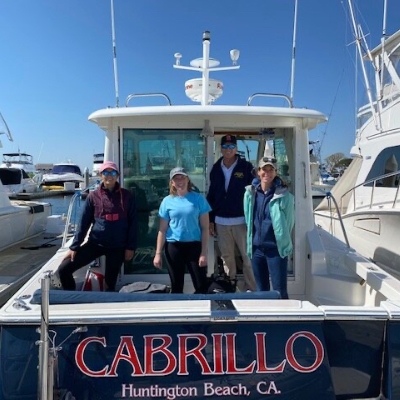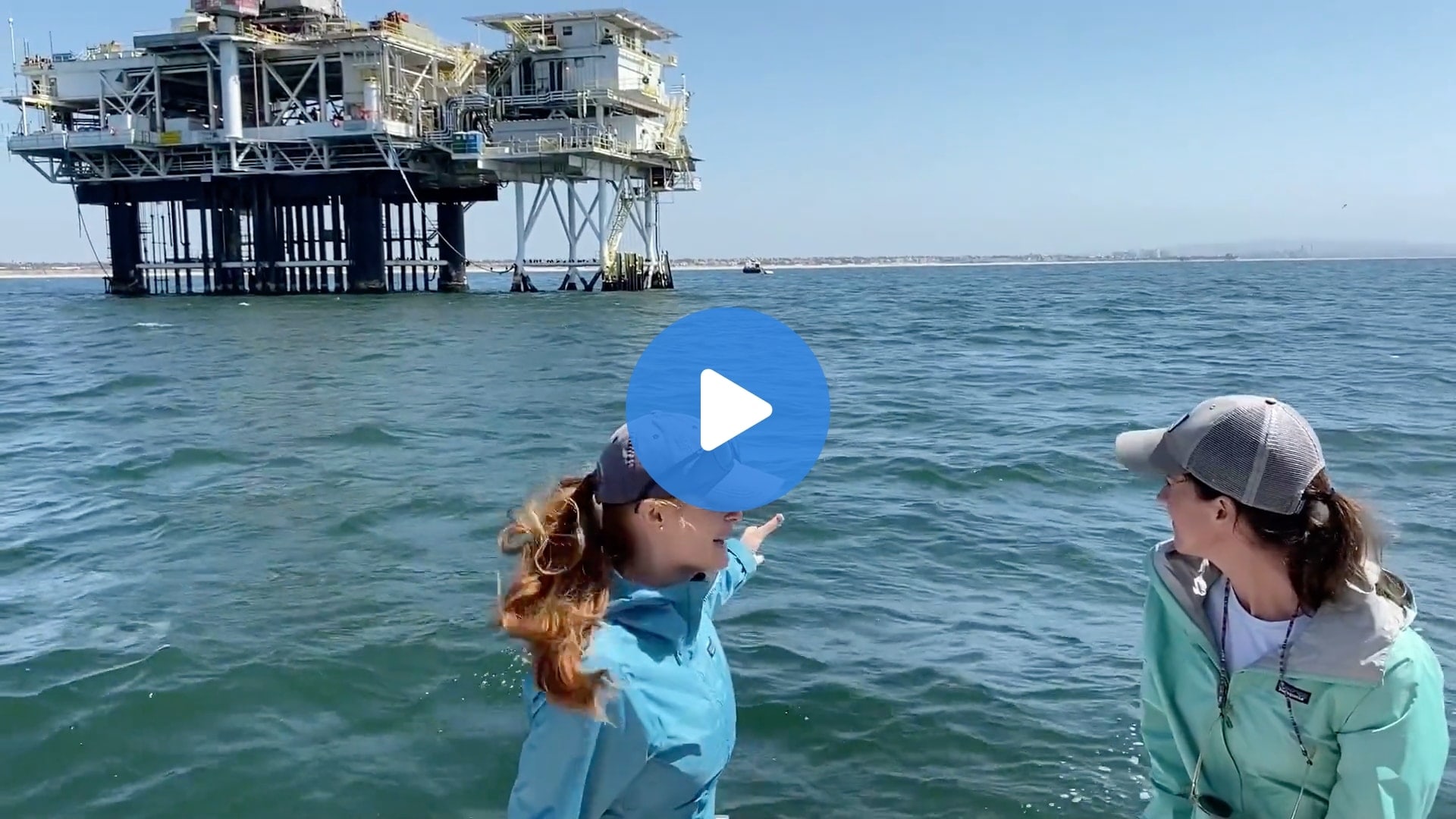ROV Deployment and Testing with Blue Latitudes
D/Y Cabrillo / Huntington Beach, CA
March 18, 2021
On March 18th, 2021, The International SeaKeepers Society assisted the Blue Latitudes Foundation aboard the DISCOVERY Yacht Cabrillo; a 38’ Black Cove Yacht. After several months of preparation in protected waters, the Blue Latitudes Foundation (BLF) team, consisting of Amber Sparks, Emily Hazelwood, and Jacqueline Rosa, recently completed two open ocean deployments with the Deep Trekker DTG3 Remotely Operated Vehicle (ROV)! Fueled by the launch of the BLF’s recent project, an ROV- based community science assessment, the purpose of the outing was to test their ROV protocols in the open ocean with the hopes of soon deploying these protocols to gather marine life data on artificial reefs and offshore oil platforms in furtherance of the Rigs-To-Reefs Project.
Aboard the Cabrillo, owned and operated by our DISCOVERY Yacht member, Steve Marcin, the team motored out to nearby artificial reefs constructed by California Department of Fish and Wildlife off of the Huntington Beach harbor. They visited four artificial reef sites, each consisting of 1,000 tons of quarry rock. The DTG3 ROV was deployed adjacent to the reefs and dove to approximately 50 feet. While poor visibility and strong currents made it difficult to capture the reefs on camera, the team practiced piloting the underwater drone and performing transects along predetermined compass headings. Their next stop was the Long Beach Breakwater. Anchored alongside the breakwater, they launched a new instrument: the Nortek Eco. The Eco is an Acoustic Doppler Current Profiler (ADCP) that measures the movement of water using sound. While tracking ocean currents, this instrument also collects temperature and water pressure data. Understanding currents is important in marine ecosystems because they redistribute heat, nutrients, and oxygen within the ocean. While collecting data, the Eco rests on seafloor and profiles the currents above it. When the timer is up, the Eco self- releases and floats to the surface for retrieval.
The end goal for this type of research is to assess how well eco systems can thrive in artificial reef environments. While California does have some legislation put in place to allow for the decommissioning and repurposing of oil platforms into artificial reefs, this has yet to happen. This kind of community-based science approach, as well as educating the public about the benefit of taking something industrial and man-made, and making it beneficial for the natural world, may help spread the Rigs-To-Reefs project.
Partner Sites
Blue Latitudes Foundation


